Rarest Birds in North American
Listed below are ten of the rarest birds that breed in Canada or United States.
Several of the bird species and subspecies described here have plummeted in recent history from great abundance to the edge of extinction.
Some populations are climbing back from exceedingly low numbers, although are still precariously small.
Many of the rare birds in this list are among the most critically endangered animals in North America and the world.
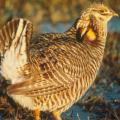
Attwater's Greater Prairie Chicken
Tympanuchus cupido attwateri
About a million Attwater's prairie chickens roamed the Gulf Coast prairies of southwestern Louisiana and Texas in 1900. Within two decades, they were gone from Louisiana. Despite ongoing releases of captive-bred birds, the wild population has lingered at less than 50 birds for much of the past decade. A spring 2005 census estimated 40 birds lived wild, confined to two reserves in Texas.

California Clapper Rail
Rallus longirostris obsoletus
Possibly tens of thousands of California clapper rails used to live from Morro Bay to Tomales Bay on the Pacific coast. Only 15% of their marshland habitat remains, the rest destroyed by pollution, development and diking. The population dropped to a low of 200 to 400 birds in the early 1990s. The latest estimate is 1,800 birds, now found only in San Francisco and Suisun Bays.

California Condor
Gymnogyps californianus
Historically these giant birds inhabited several western US states and Mexico. Their numbers plummeted to a low of 22 birds in 1981, all in California. Condors became extinct in the wild in 1987 when the last six were captured. Since then, captive breeding is slowly rebuilding the population and many birds have been reintroduced to their native habitat. As of October 2007 there were 305 California condors of which 148 live wild.
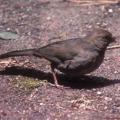
Inyo California Towhee
Pipilo crissalis eremophilus
This chocolate-colored songbird is confined to riparian thickets around desert springs and streams in California's Argus Mountains. Feral livestock damaged much of the bird's habitat and the population hovered at fewer than 150 birds for many years. A 2004 survey on a quarter of their range found 204 adults, suggesting that numbers are increasing.
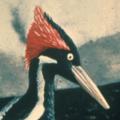
Ivory-billed Woodpecker
Campephilus principalis
The large, crested woodpecker was thought to be extinct after it was last seen in Cuba in 1987. It also hadn't been spotted in the United States since 1944 in north-eastern Louisiana. Then the species was rediscovered in 2004, flying in the Big Woods region of eastern Arkansas. It's still not known how many of the elusive birds remain; there may only be one.
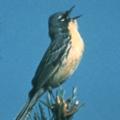
Kirtland's Warbler
Dendroica kirtlandii
As the specific type of young jack pine forest that Kirtland's warblers rely on for breeding in Michigan, Wisconsin, Ontario and Quebec became scarcer, so did the birds. During the 1970s and 1980s, the population stayed at around 200 singing males, with just 167 found in some years. The kind of habitat they need was doubled between 1987 and 1990, and the birds responded. During 2003, there were 1,202 singing males counted in Michigan.
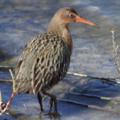
Light-footed Clapper Rail
Rallus longirostris levipes
Light-footed clapper rails once ranged from the Pacific coastal marshes of Santa Barbara County to Bay of San Quintin in Baja California, Mexico. Loss of their wetland habitat reduced numbers to 142 breeding pairs in California by 1984. Since then, release of captive birds and habitat restoration have enabled the population to grow. The spring 2006 survey counted 408 breeding pairs and 83 single birds at 18 marshes in southern California.
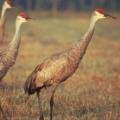
Mississippi Sandhill Crane
Grus canadensis pulla
Formerly a coastal plain resident of Louisiana, Mississippi, Alabama, and Florida, these cranes now only live in Jackson County, Mississippi. Their population dropped to a low of 30 birds during the 1960s after much of their habitat was converted to pine plantations. The single wild flock totals around 120 birds. Even after releasing hundreds of cranes hatched in captivity, the wild population has not grown appreciably for many years.
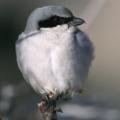
San Clemente Loggerhead Shrike
Lanius ludovicianus mearnsi
This small, dark subspecies of loggerhead shrike is found only on San Clemente island of southern California, where feral goats degraded the habitat and feral cats preyed on birds. In 1996 only 15 individual shrikes remained wild on the island while another 10 lived in captivity. With improvements in the native habitat and release of more than 300 captive-born birds, the wild population is recovering. A 2006 census found 40 wild breeding pairs, that had hatched over 160 chicks.
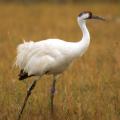
Whooping Crane
Grus americana
Prior to 1870, about 1,400 whooping cranes lived in North America. Their number declined to a low of 15 individuals in 1941. Breeding in captivity and releases into the wild have built up three flocks. The largest group, totalling 237 birds in early 2007, nests in Alberta's Wood Buffalo Park and winters in Texas at Aransas National Wildlife Refuge. The winter 2006-07 census counted 518 whooping cranes in all, including 373 free-living birds.